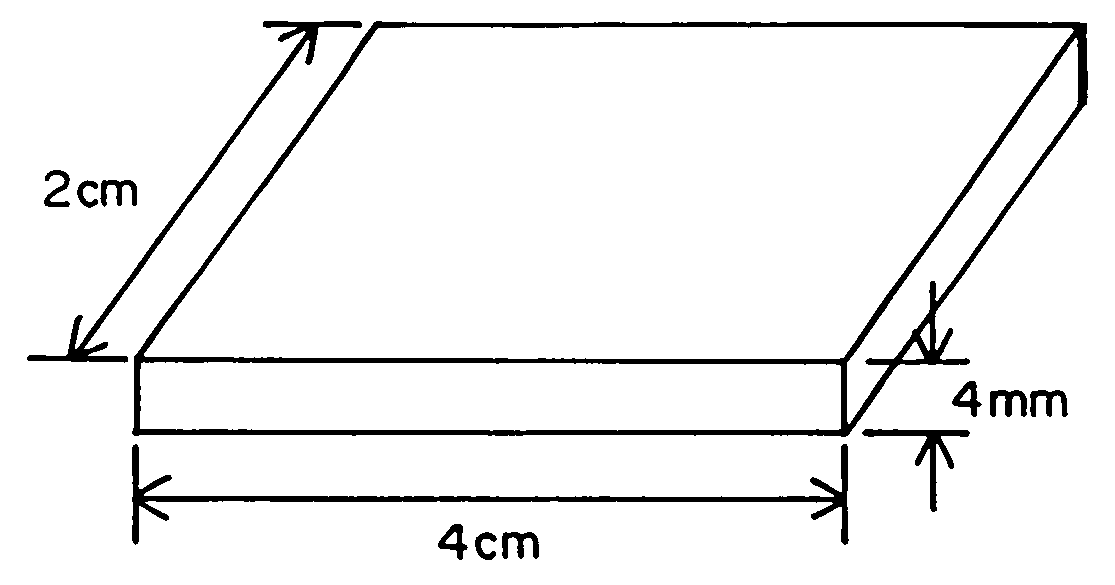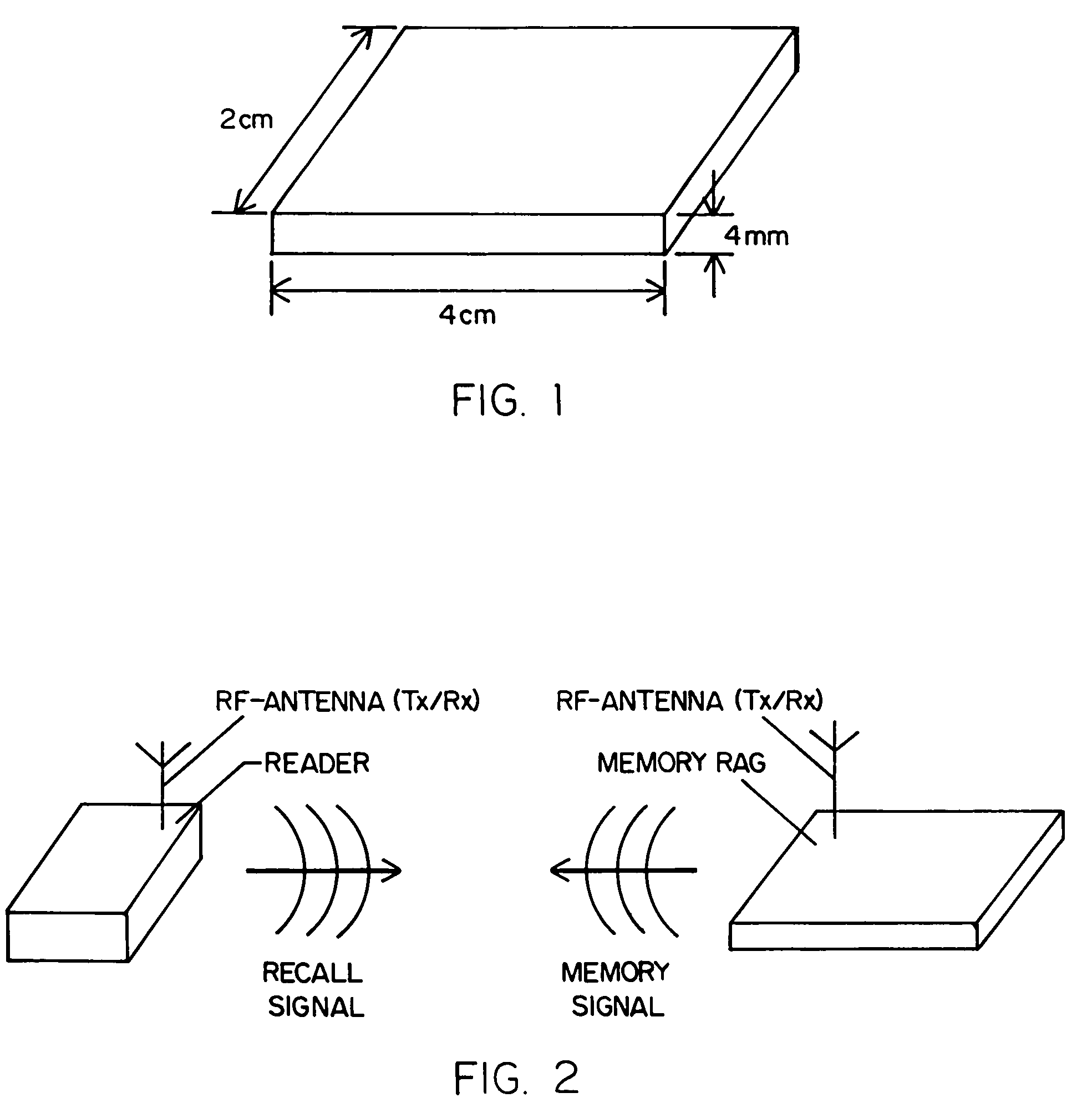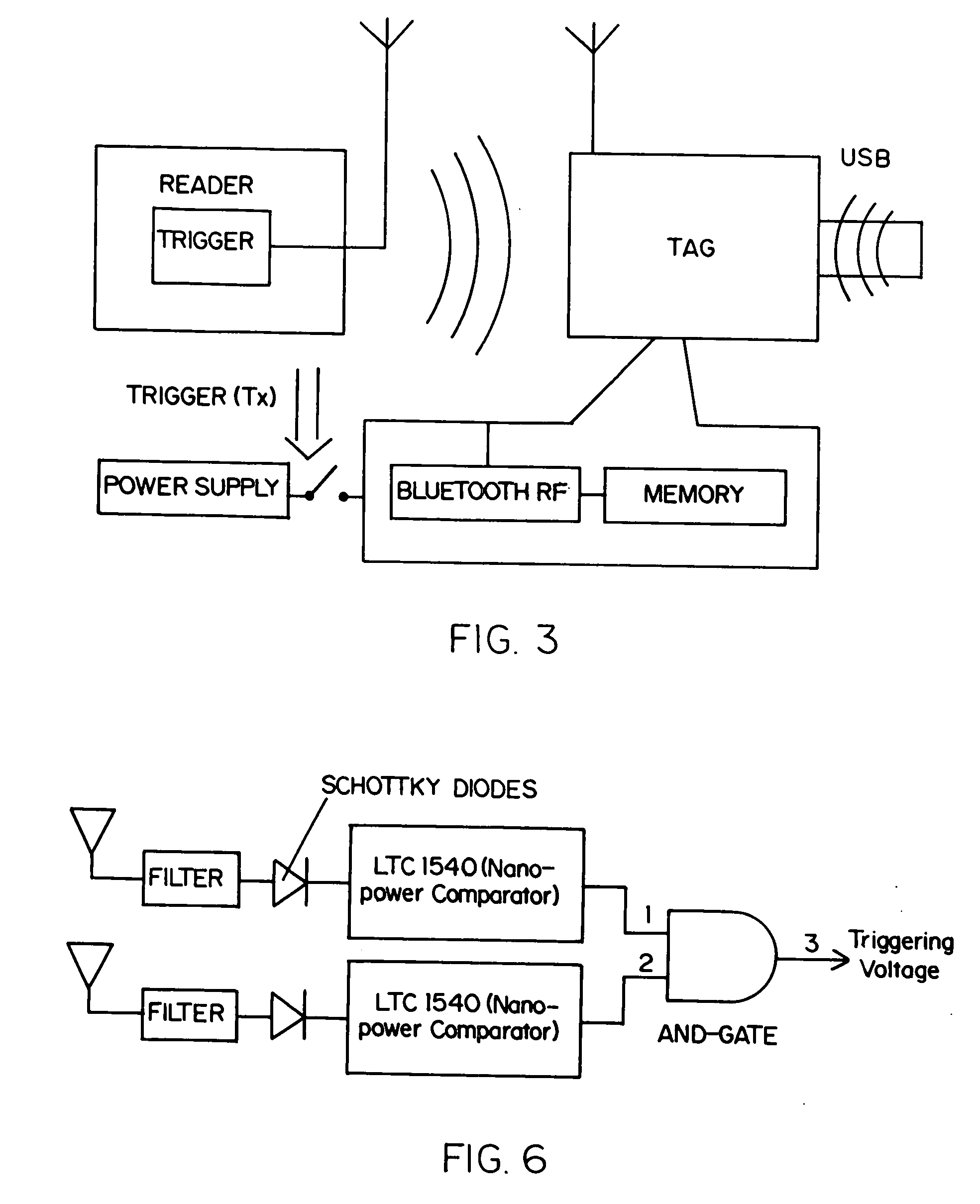Wireless personal information carrier having logic for connecting a battery only during data transfers
a personal information carrier and battery technology, applied in the field of personal information carrier devices, can solve the problems of chronically ill patients insufficient, avoid unnecessary use of the battery power of the tag, and preserve information privacy
- Summary
- Abstract
- Description
- Claims
- Application Information
AI Technical Summary
Benefits of technology
Problems solved by technology
Method used
Image
Examples
Embodiment Construction
[0027]The basic problem addressed by the present invention, is how to preserve distributed power stored in batteries located remotely and difficult to recharge. It is easy to distribute memory data, but it is difficult to distribute power, especially when data content is high, up to 4 GB, or even higher. The solution, which is the subject of this invention, is a “rechargeable trigger” (i.e., a trigger signal that can send electromagnetic energy, sufficient to “activate” the memory tag, herein called Distributed Wireless Memory Tag (DWMT)). The trigger is a Tx / Rx (transceiver) subsystem, located in part at the reader, and located in part at the tag. The trigger is similar to one that is used in RFID-devices, except the trigger DWMT memory content is much larger than that in the RFID case (e.g., 4 GB vs. 128 bytes). Another difference is that the RFID tag is much slower than the DWMT. Memory transfer in the preferred embodiment of the invention can be very fast (up to 100 Mbit / sec). T...
PUM
 Login to View More
Login to View More Abstract
Description
Claims
Application Information
 Login to View More
Login to View More - R&D
- Intellectual Property
- Life Sciences
- Materials
- Tech Scout
- Unparalleled Data Quality
- Higher Quality Content
- 60% Fewer Hallucinations
Browse by: Latest US Patents, China's latest patents, Technical Efficacy Thesaurus, Application Domain, Technology Topic, Popular Technical Reports.
© 2025 PatSnap. All rights reserved.Legal|Privacy policy|Modern Slavery Act Transparency Statement|Sitemap|About US| Contact US: help@patsnap.com



